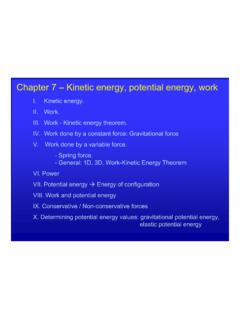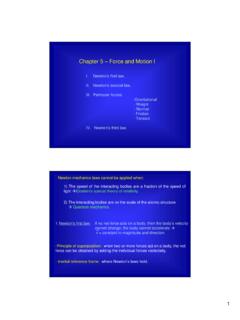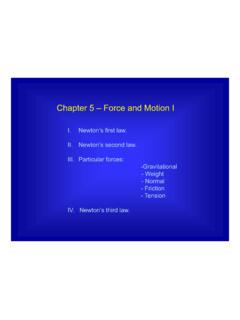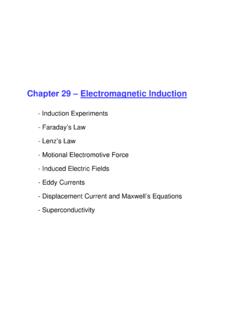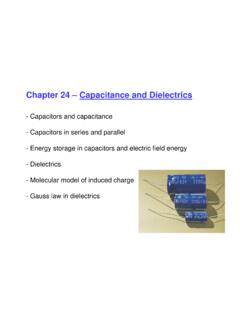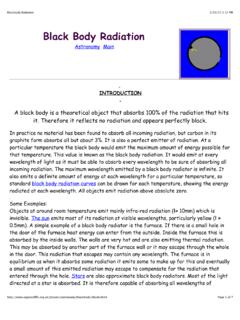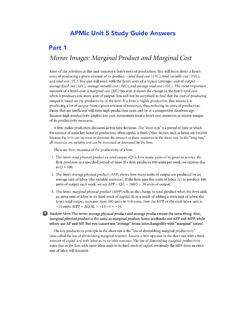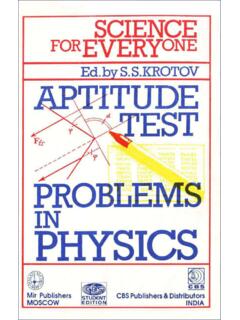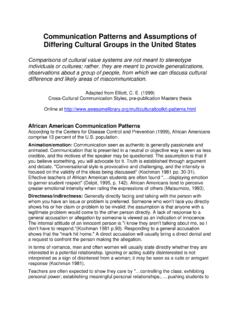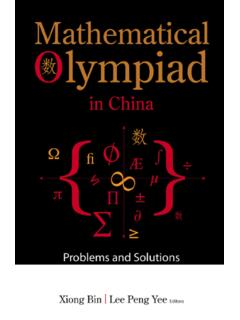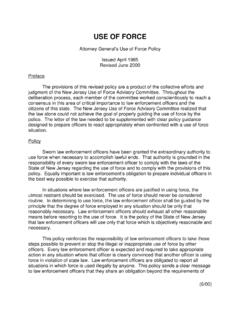Transcription of Combination of Waves - University of Central Florida
1 Combination of Waves In general, when we combine two Waves to form a composite wave, the composite wave is the algebraic sum of the two original Waves , point by point in space [Superposition Principle]. When we add the two Waves we need to take into account their: Direction Amplitude Phase + =. Combination of Waves The combining of two Waves to form a composite wave is called: Interference + =. Constructive interference ( Waves almost in phase). The interference is constructive if the Waves reinforce each other. Combination of Waves The combining of two Waves to form a composite wave is called: Interference ( Waves almost cancel.)
2 + =. Destructive interference (Close to out of phase). The interference is destructive if the Waves tend to cancel each other. Interference of Waves + =. Constructive interference (In phase). + =. ( Waves cancel). ( out of phase) Destructive interference Interference of Waves When light Waves travel different paths, and are then recombined, they interfere. 1 Each wave has an electric field * 2. whose amplitude goes like: E(s,t) = E0 sin(ks- t) . Mirror Here s measures the distance traveled along each wave's path.
3 + =. Constructive interference results when light paths differ by an integer multiple of the wavelength: s = m . Interference of Waves When light Waves travel different paths, and are then recombined, they interfere. 1 Each wave has an electric field * 2. whose amplitude goes like: E(s,t) = E0 sin(ks- t) . Mirror Here s measures the distance traveled along each wave's path. + =. Destructive interference results when light paths differ by an odd multiple of a half wavelength: s = (2m+1) /2. Interference of Waves Coherence: Most light will only have interference for small optical path differences (a few wavelengths), because the phase is not well defined over a long distance.
4 That's because most light comes in many short bursts strung together. Incoherent light: (light bulb). random phase jumps . Interference of Waves Coherence: Most light will only have interference for small optical path differences (a few wavelengths), because the phase is not well defined over a long distance. That's because most light comes in many short bursts strung together. Incoherent light: (light bulb). random phase jumps . Laser light is an exception: Coherent Light: (laser). Thin Film Interference We have all seen the effect of colored reflections from thin oil films, or from soap bubbles.
5 Film; oil on water Thin Film Interference We have all seen the effect of colored reflections from thin oil films, or from soap bubbles. Rays reflected off the lower surface travel a longer optical path than rays reflected off upper surface. Film; oil on water Thin Film Interference We have all seen the effect of colored reflections from thin oil films, or from soap bubbles. Rays reflected off the lower surface travel a longer optical path than rays reflected off upper surface. Film; oil on water If the optical paths differ by a multiple of , the reflected Waves add.
6 If the paths cause a phase difference , reflected Waves cancel out. Thin Film Interference Ray 1 has a phase change of upon reflection Ray 2 travels an extra distance 2t (normal incidence approximation). 1. 2 n=1. oil on water t n>1 optical film on glass soap bubble Constructive interference: rays 1 and 2 are in phase 2 t = m n + n 2 n t = (m + ) [ n = /n]. Destructive interference: rays 1 and 2 are out of phase 2 t = m n 2 n t = m . Thin Film Interference When ray 2 is in phase with ray 1, they add up constructively and we see a bright region.
7 different wavelengths will tend to add constructively at different angles, and we see bands of different colors. 1. 2 n=1. oil on water t n>1 optical film on glass soap bubble Thin films work with even low coherence light, as paths are short When ray 2 is out of phase, the rays interfere destructively. This is how anti-reflection coatings work. Michelson Interferometer A Michelson interferometer uses a beam splitter to create two different optical paths. Mirrors Input Beam-splitter Output What is the output? - If the output beams are perfectly aligned, they will interfere uniformly, giving either a bright or dark output, depending on their relative phase.
8 Michelson Interferometer A Michelson interferometer uses a beam splitter to create two different optical paths L1 and L2. Mirrors Input Beam-splitter Output L = L1 L2 = m constructive interference, bright spot L = L1 L2 = (m+1/2) destructive interference, dark spot


